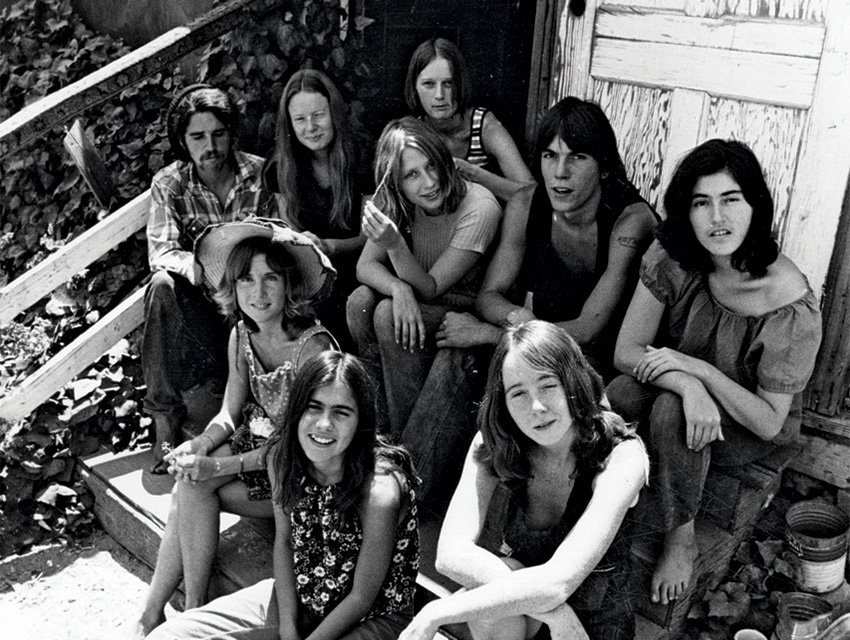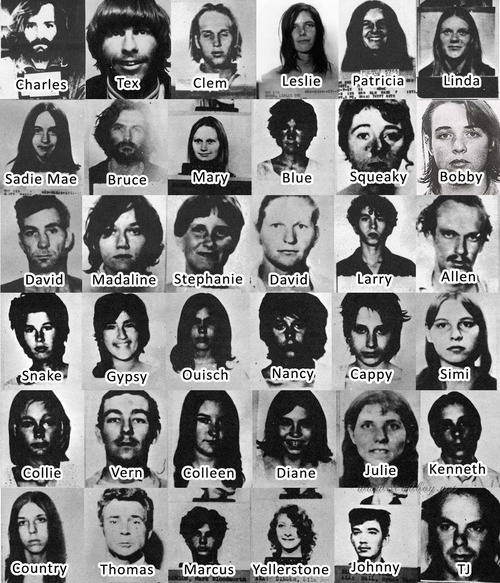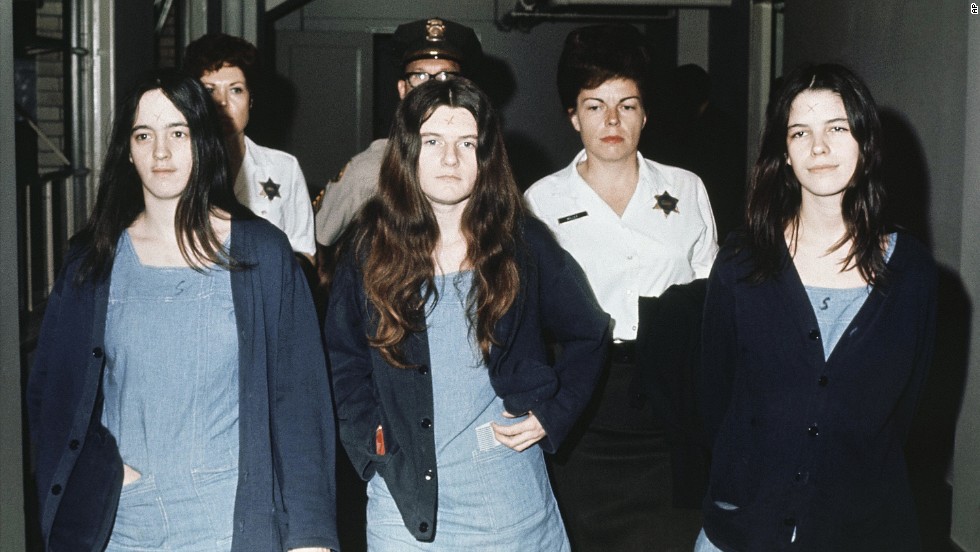When you think about cults, one name always comes up in the conversation: The Manson Family. Yeah, this isn’t just any ordinary group; it’s a dark chapter in history that left scars on society. The Manson Family wasn’t just some random bunch of people hanging out—it was a twisted movement led by a guy named Charles Manson. And trust me, their story is wilder than anything you’ve seen on TV. So buckle up, because we’re diving deep into the madness.
Now, you might be wondering why this cult still fascinates people decades later. It’s not just because of the horrifying crimes they committed—it’s also about the psychology behind it all. How could someone convince others to commit such atrocities? What drove these individuals to follow Manson like he was some kind of god? This article will peel back the layers and give you the full scoop on the Manson Family, their dark legacy, and what it means today.
Before we jump into the nitty-gritty details, let’s set the stage. The late 1960s were a time of social upheaval, rebellion, and experimentation. People were questioning authority, exploring spirituality, and pushing boundaries. Amidst all this chaos, Charles Manson emerged as a charismatic leader with a vision—or at least that’s how he sold it. But his vision wasn’t exactly sunshine and rainbows. It was more like murder, manipulation, and mayhem. And that’s where our story begins.
Read also:Benjamin Hall The Rising Star Redefining Modern Journalism
Who Were the Manson Family?
The Manson Family wasn’t your typical family unit. No mom, dad, and 2.5 kids here. Instead, it was a collection of misfits, runaways, and drifters who found themselves under the spell of Charles Manson. These weren’t just random people either—they were deeply devoted to him, willing to do whatever he asked, no matter how extreme.
So, who exactly made up this notorious group? Well, there were names you might recognize from history books and documentaries, like Susan Atkins, Patricia Krenwinkel, and Leslie Van Houten. These women, along with others, became infamous for their roles in the Tate-LaBianca murders. But what drew them to Manson in the first place? That’s the million-dollar question.
Charles Manson: The Charismatic Leader
Let’s talk about the man behind the curtain—or should I say, the man behind the murders. Charles Manson wasn’t just any guy; he was a master manipulator with a knack for convincing people to believe in his twisted worldview. Born in 1934, Manson had a troubled childhood filled with abandonment and crime. By the time he arrived in California in the late 1960s, he was ready to build his own little empire.
He painted himself as a prophet, a savior, and a revolutionary. He preached about a race war he called "Helter Skelter," inspired by the Beatles song of the same name. According to Manson, this war would lead to the downfall of society, and only his followers would survive. Sounds crazy, right? But somehow, it worked.
The Birth of the Manson Family
It all started when Manson moved to California in the mid-1960s. He gravitated toward the counterculture scene, attracting followers with his magnetic personality and promises of freedom. At first, the group lived a relatively harmless existence, experimenting with drugs and music. But things took a dark turn when Manson began preaching violence as a means to achieve his vision of apocalypse.
By 1968, the Manson Family had established a base at Spahn Ranch, an old movie set located in the Chatsworth area of Los Angeles. This became their headquarters, a place where Manson could exert complete control over his followers. Life at the ranch was anything but normal. There were strict rules, bizarre rituals, and a constant sense of impending doom.
Read also:Ryan Reynolds And Blake Livelys Lavish Home A Luxurious Oasis
Life Inside the Manson Family
So, what was life like inside the Manson Family? Imagine a commune where every decision is dictated by one person, and that person happens to be completely unhinged. Followers were expected to abandon their old lives and dedicate themselves entirely to Manson’s cause. They worked on the ranch, cared for the children, and participated in grueling hours of meditation and indoctrination.
One of the most chilling aspects of life in the Manson Family was the concept of "Helter Skelter." Manson believed that by committing violent acts, he could hasten the arrival of the apocalyptic race war. This mindset ultimately led to the brutal murders that would cement the group’s place in history.
The Tate-LaBianca Murders: A Turning Point
No discussion of the Manson Family would be complete without addressing the Tate-LaBianca murders. On August 8 and 9, 1969, members of the Manson Family carried out two separate killing sprees that shocked the nation. The victims included actress Sharon Tate, who was eight months pregnant, and four others at Tate’s home. The following night, Leno and Rosemary LaBianca were brutally murdered in their Los Angeles residence.
These crimes weren’t just random acts of violence; they were carefully planned and executed according to Manson’s instructions. He believed that the murders would spark the race war he had been predicting. Instead, they led to the arrest and eventual conviction of Manson and several of his followers.
The Aftermath of the Murders
When the full extent of the Manson Family’s crimes came to light, the public was horrified. How could anyone commit such heinous acts? The trial, which began in 1970, was a media circus that captivated the nation. Manson and his followers were eventually found guilty and sentenced to death. However, their sentences were later commuted to life in prison due to changes in California’s death penalty laws.
Even behind bars, Manson remained a figure of fascination. He gave interviews, wrote books, and continued to attract attention until his death in 2017. Meanwhile, the surviving members of the Manson Family served long prison terms, some of which are still ongoing.
Psychology of the Manson Family
What makes the Manson Family so disturbing isn’t just the crimes they committed—it’s the psychology behind it all. How could seemingly ordinary people be swayed by Manson’s rhetoric? Experts have pointed to a combination of factors, including Manson’s charisma, the unstable environment of the late 1960s, and the vulnerabilities of his followers.
Many of the women in the Manson Family came from troubled backgrounds, seeking refuge and belonging. Manson offered them a sense of purpose, even if it was a twisted one. He exploited their insecurities, promising them love and acceptance in exchange for their loyalty. And once they were hooked, it was almost impossible to break free.
Why Do People Follow Cult Leaders?
The Manson Family’s story raises important questions about cult dynamics and the psychology of leadership. Why do people fall under the spell of charismatic leaders, especially those with destructive intentions? Research suggests that several factors contribute to this phenomenon:
- Vulnerability: Many cult members come from difficult circumstances, making them more susceptible to manipulation.
- Charisma: Leaders like Manson often possess magnetic personalities that draw people in.
- Isolation: Cults frequently isolate their members from the outside world, creating dependency on the group.
- Groupthink: Once inside a cult, individuals may adopt the beliefs and behaviors of the group, suppressing their own doubts.
Understanding these dynamics can help prevent similar tragedies in the future. But as history has shown, the lure of cults remains a persistent challenge.
The Legacy of the Manson Family
Decades after their crimes, the Manson Family continues to loom large in the public consciousness. Their story has inspired countless books, movies, and documentaries, each offering a new perspective on the events. But why does this particular cult hold such enduring fascination?
Part of the answer lies in the sheer audacity of their crimes. The idea that a small group of people could commit such brutality challenges our understanding of human nature. Additionally, the Manson Family represents a dark reflection of the counterculture movement, highlighting the dangers of unchecked idealism.
Lessons from the Manson Family
While the Manson Family’s legacy is undeniably dark, it also offers valuable lessons for society. By studying their rise and fall, we can better understand the mechanisms of manipulation and the importance of critical thinking. Here are a few key takeaways:
- Be skeptical: Don’t blindly follow anyone, no matter how convincing they seem.
- Seek community: Building healthy relationships can help protect against isolation and vulnerability.
- Stay informed: Education is a powerful tool against misinformation and manipulation.
By learning from the past, we can work toward a future where such tragedies are less likely to occur.
Modern-Day Implications
The story of the Manson Family isn’t just a relic of the past; it has implications for the present day. In an era of social media and online communities, the potential for manipulation and radicalization is greater than ever. Groups with extreme ideologies can spread their messages quickly and efficiently, reaching vulnerable individuals across the globe.
That’s why it’s crucial to remain vigilant. Whether it’s a cult, a conspiracy theory, or a political movement, we must critically evaluate the information we encounter and the people we choose to trust. The Manson Family serves as a stark reminder of what can happen when we fail to do so.
Preventing Future Cults
So, how can we prevent the rise of future cults? Experts suggest a multi-faceted approach:
- Education: Teaching critical thinking skills from a young age can help individuals resist manipulation.
- Community support: Encouraging strong social connections can reduce feelings of isolation and vulnerability.
- Regulation: Governments and organizations can play a role in monitoring and addressing harmful groups.
While no solution is foolproof, taking these steps can make a difference in protecting individuals and society as a whole.
Conclusion
The Manson Family’s dark legacy is a chilling reminder of the dangers of unchecked power and manipulation. From their humble beginnings at Spahn Ranch to the infamous Tate-LaBianca murders, their story continues to captivate and disturb audiences worldwide. But beyond the sensationalism lies an important lesson: understanding the psychology of cults can help us prevent similar tragedies in the future.
So, what can you do? Start by educating yourself and others about the warning signs of manipulation. Stay engaged with your community, and don’t be afraid to question authority. Together, we can create a world where the horrors of the Manson Family remain a distant memory rather than a recurring nightmare.
And hey, if you’ve made it this far, thanks for sticking around! If you found this article interesting, feel free to share it with your friends or leave a comment below. Let’s keep the conversation going and learn from history so we don’t repeat it.
Table of Contents
- Who Were the Manson Family?
- Charles Manson: The Charismatic Leader
- The Birth of the Manson Family
- Life Inside the Manson Family
- The Tate-LaBianca Murders: A Turning Point
- The Aftermath of the Murders
- Psychology of the Manson Family
- Why Do People Follow Cult Leaders?
- The Legacy of the Manson Family
- Lessons from the Manson Family
- Modern-Day Implications
- Preventing Future Cults


